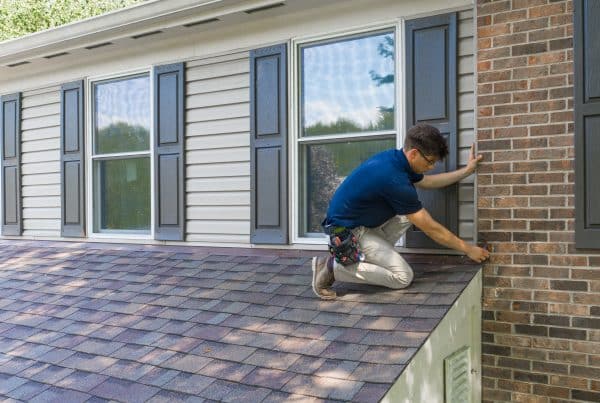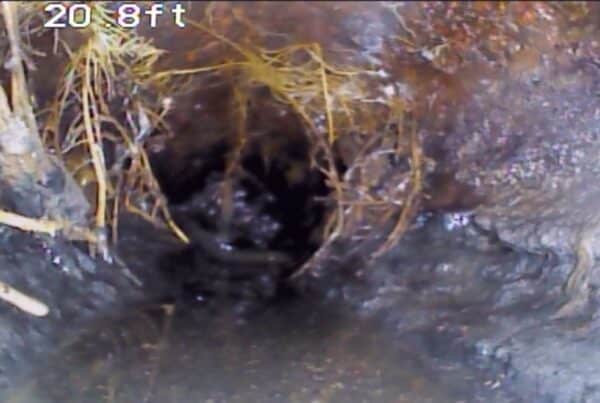Horizon Point Inspections: The Exterior Chimney Inspection
The chimney often flies under the radar during a home inspection—until there’s a major problem. It’s easy to overlook, especially when it’s not front and center. But the truth is, chimney issues can be expensive, dangerous, and structurally significant. At Horizon Point Inspections, we know that what looks like a minor crack or a bit of rust can lead to serious fire, moisture, or ventilation problems if ignored. That’s why it deserves a close look during every inspection.
What We Inspect: Ohio SOPs for Chimney Inspections
Under Ohio’s Standards of Practice (SOPs) for home inspections, chimney inspections are visual and non-invasive. That means we inspect what’s readily accessible and visible—usually from the ground, a ladder, or accessible roof areas.
Here’s what our inspectors at Horizon are looking for:
- Overall structure and condition – is it stable and not pulling away from the house.
- Flashing where the chimney meets the roof – this is a major highway for water intrusion when the flashing has been damaged or compromised.
- Masonry or exterior covering – brick, wood, and vinyl siding are very common in our area and will have problems over time.
- Chimney crown and cap – it is typical to find cracks and deterioration to this area of the chimney during the inspection.
- Flue condition (visible portion only) – Our inspectors will looked down and up the flue to view all the accessible areas of the flue.
- Chase Cover (for prefabricated chimneys) – anything but brick.
But there are important limitations. The Ohio SOPs do not require:
- Scoping the flue or viewing the enite interior chimney system. This would be considered a Level II chimney inspection and is outside the scope or capabilities of home inspectors.
- Walking on unsafe or inaccessible roofs, this is a safety issue and our inspectors will inspect the chimney from the safest location possible.
- Inspecting appliance connections or measuring draft performance for those appliances.
- Climbing high or steep areas that pose safety risks to our inspectors.
Weather, height, and roof conditions can all limit how thorough we can be, and we make those limitations clear in the report.
Exterior Parts:
Chimney Anatomy: Components and Materials
- Chimney stack – the visible portion extending above the roof.
- Cap – helps block rain, debris, and animals.
- Flashing – seals the gap between chimney and roof.
- Flue – the channel that vents smoke and gases.
- Chase cover – metal top cover on prefab chimneys.
- Masonry or siding – the exterior finish.
Interior Parts:
- Flue liner – protects the chimney walls and improves safety (can be clay, metal, or cast-in-place).
Materials We See:
- Exterior: brick, stone, stucco, metal, or wood-framed chase with siding.
- Flue liners: clay tiles (common in older homes), stainless steel (used in relining or newer systems), cast-in-place systems (less common, more durable).
Why It’s Built This Way:
- To direct dangerous combustion gases safely out of the home while using the fireplace..
- To shed water and resist weather damage.
- To protect structural elements from heat and moisture.
- To keep the system fire-safe and reduce indoor air quality risks.
Common Exterior Defects We Find
Chimneys take a beating from weather, temperature swings, and lack of maintenance. These are some of the most frequent issues we find during the home inspection:
- Cracked or deteriorating brick and mortar (spalling, missing joints).
- Damaged or missing chimney caps or crowns.
- Rusted, bent, or poorly installed chase covers.
- Failing or improperly installed flashing (leads to roof leaks).
- Leaning or tilting chimneys from foundation issues or frost heave.
- Exterior creosote stains, indicating potential draft or flue issues.
- Nests, vines, or other signs of animal or vegetation intrusion.
- Water damage from poor sealing or caulking.
These problems can lead to leaks, structural problems, or even chimney fires if not addressed.
Repair Solutions and General Costs
Chimney repairs vary widely in cost depending on severity, access, and materials. Horizon Point has several chimney contractors we recommend to all our clients who have chimney issues.
Here’s a general breakdown of the cost:
Minor Repairs:
- Repointing mortar joints: $500–$1,500
- Chimney cap installation: $150–$400
- Flashing repair or replacement: $200–$600
Moderate Repairs:
- Crown rebuild or repair: $750–$2,000
- Chase cover replacement (metal systems): $300–$800
- Partial brick replacement: $500–$2,500
Major Repairs:
- Full chimney rebuild: $4,000–$10,000+
- Structural stabilization (for leaning chimneys): varies greatly and would need to be looked at prior to determining a cost.
- Flue relining (if interior is evaluated and found deficient): often $2,000–$5,000
We always recommend follow-up with a qualified chimney professional or mason. Some repairs may also require coordination with a roofer or structural contractor if it is a flashing or structural problem.
Why Chimneys Matter in Inspections
Chimneys play a critical safety role in the home. A damaged or poorly maintained chimney can:
- Create fire hazards-damaged flues can allow smoke and hot gases to get into the home.
- Leak dangerous gases like carbon monoxide-improper venting and drafting if present can sometimes present with black stains on the interior brick.
- Cause structural deterioration from water infiltration
- Lead to expensive repairs if issues go unnoticed
Even though our inspection is limited to what we can see, it’s a key part of the report. Catching defects early can save thousands and give buyers a clearer picture of what they’re walking into. Skipping the home inspection is skipping a major system inspection—one that says a lot about how well the home’s been cared for.
The chimney may not seem like a big deal until there’s smoke in the attic or water in the ceiling. It’s one of those systems that works quietly—until it doesn’t. That’s why home inspectors should always pay attention to it, and buyers and homeowners should take it seriously. Even within the limits of a standard inspection, we can identify signs of trouble and point clients in the right direction.



